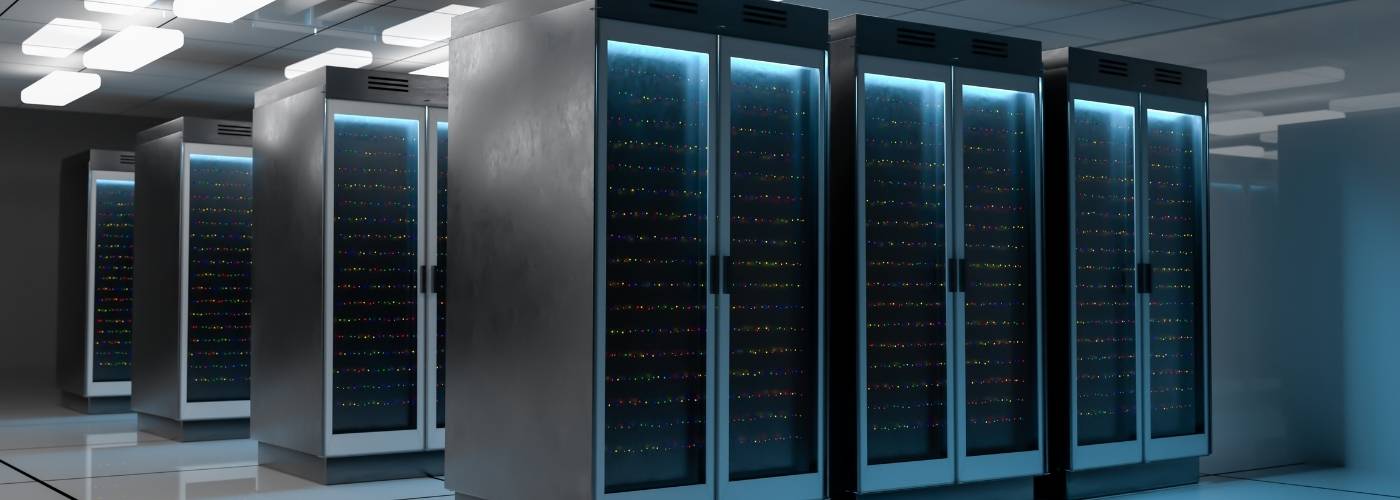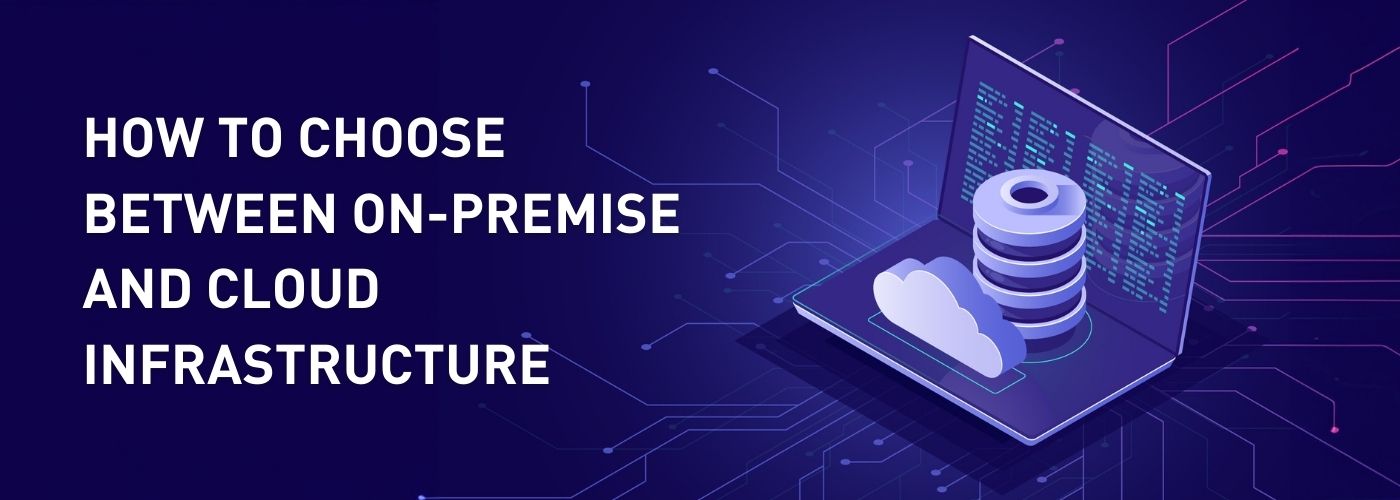How To Choose Between On-Premise And Cloud Infrastructure
Not Categorized
How To Choose Between On Premise And Cloud Infrastructure
Are you struggling to decide between on premise and cloud infrastructure for your workloads? The choice can be overwhelming, with each option offering its own set of advantages and disadvantages. But fear not! In this article, we will guide you through the decision-making process, helping you weigh the pros and cons of both models.
What Is The Difference Between On-Premise and Cloud Infrastructure?

On premise server infrastructure refers to a model where all the necessary infrastructure and hardware, including cloud servers, storage devices, and networking equipment, are physically located within an organization’s premises. This offers a higher level of control and security as businesses can directly manage their environment.
However, it comes with its own set of challenges such as the need for specialized personnel to manage the hardware on-site, upfront costs for purchasing and maintaining equipment, limited scalability options, and the risk of single points of failure if not properly managed.
On the other hand, cloud involves outsourcing infrastructure to a third-party provider who owns and manages all the necessary infrastructure at their data or colocation centers. This model allows businesses to focus on their core competencies without worrying about the technical aspects of managing servers and networking.
Additionally, cloud provides greater scalability options as businesses can easily upgrade or scale down their resources based on demand. It also offers better redundancy through multiple data centers spread across different geographical locations, minimizing the risk of downtime due to localized issues.
Both models have their benefits depending on business requirements. While on-premise infrastructure offers more control and potentially lower long-term costs for larger organizations with dedicated IT teams, small businesses may benefit from cloud due to its simplicity and flexibility in terms of resource allocation.
Ultimately, choosing between these options requires careful consideration of factors such as budget constraints, security needs, scalability requirements, and future growth plans.
Pros & Cons of On-Premise Infrastructure

On premise infrastructure offers an unmatched level of control. By managing your own server infrastructure, you have complete autonomy over data storage, security protocols, and workloads allocation. This freedom allows for tailored solutions that are essential for businesses operating in highly regulated industries or dealing with sensitive customer information.
Another benefit is the potential cost savings that come with the on-premise option. While setting up and maintaining an on-premises infrastructure may require a significant initial investment, in the long run it can often be more cost-effective than relying on third-party cloud services.
With no monthly rental fees or cloud service charges eating into budgets, organizations can allocate their resources to other critical areas such as innovation and scaling operations.
While the on-premise model can seem like a great choice, it can also come with its fair share of issues. The cost involved in setting up and maintaining the infrastructure tends to be quite high and expensive.
Companies need to invest in servers, networking equipment, cooling systems, and backup power sources. These expenses can quickly add up and become a significant financial burden.
Another disadvantage of on-premise infrastructure is the limited scalability it offers. As your business grows and demands increase, you will eventually reach a point where your infrastructure cannot handle the workload.
This means investing in additional hardware or upgrading existing ones, both of which require time and money. With cloud, on the other hand, scaling up can be as simple as adjusting your subscription plan.
Pros & Cons of Cloud

One of the key advantages of cloud is improved data security. By storing your business’s sensitive information on cloud servers, you can rest assured that it is protected against physical damage, theft, or natural disasters such as fires or floods from primary location. Most data centers offer software backup recovery that ensures 100% safety.
Data centers are equipped with advanced security measures including fire suppression systems, video surveillance, and biometric access controls to ensure the highest level of protection for your valuable data.
Another benefit of cloud is scalability. As your network grows and requires more resources, it’s much easier to scale up with cloud than with traditional on-premises solutions. With a few clicks or a simple phone call, you can easily upgrade your storage space or add more compute power to meet increased demand.
This flexibility allows businesses to adapt quickly to changing needs without having to invest in expensive hardware upgrades or face downtime during the migration process.
While cloud may be appealing for its convenience and cost-efficiency, one of the potential drawbacks is fully relying on a cloud provider to maintain the infrastructure properly. If it fails, you could face prolonged downtime or even losing access to your data entirely.
That’s why it’s very important to choose a provider with sufficient redundancy and hardware and networking high availability, so you don’t have to worry about potential outages.
Trusting your data and workloads to Sharktech means you get 24/7 support and care and guaranteed 100% uptime.
Summary
When it comes to choosing between on premise and cloud, there are a few factors that need to be considered. Think about the level of control you want over your infrastructure.
If you go with on-premise infrastructure, you will have complete control over your server environment, allowing for greater customization and configuration options. On the other hand, cloud infrastructure means that the responsibility of managing your server infrastructure is taken care of by a third-party provider.
Another important factor to consider is reliability and uptime. While both options can provide reliable service, cloud often comes with built-in redundancy measures such as backup power supplies and multiple internet connections.
This ensures that your network stays up and running even in case of technical issues or natural disasters. However, if you opt for on premise infrastructure, the availability of your workloads will depend largely on the strength of your own network infrastructure.
Ultimately, the choice between on premise and cloud infrastructure depends on your individual needs as well as budgetary considerations. By carefully evaluating factors such as control, reliability, uptime guarantee, scalability options and cost-efficiency against your specific requirements can help make an informed decision that best suits your needs.
Knowledge
How To Choose Between On Premise And Cloud Infrastructure
Are you struggling to decide between on premise and cloud infrastructure for your workloads? The choice can be overwhelming, with each option offering its own set of advantages and disadvantages. But fear not! In this article, we will guide you through the decision-making process, helping you weigh the pros and cons of both models.
What Is The Difference Between On-Premise and Cloud Infrastructure?

On premise server infrastructure refers to a model where all the necessary infrastructure and hardware, including cloud servers, storage devices, and networking equipment, are physically located within an organization’s premises. This offers a higher level of control and security as businesses can directly manage their environment.
However, it comes with its own set of challenges such as the need for specialized personnel to manage the hardware on-site, upfront costs for purchasing and maintaining equipment, limited scalability options, and the risk of single points of failure if not properly managed.
On the other hand, cloud involves outsourcing infrastructure to a third-party provider who owns and manages all the necessary infrastructure at their data or colocation centers. This model allows businesses to focus on their core competencies without worrying about the technical aspects of managing servers and networking.
Additionally, cloud provides greater scalability options as businesses can easily upgrade or scale down their resources based on demand. It also offers better redundancy through multiple data centers spread across different geographical locations, minimizing the risk of downtime due to localized issues.
Both models have their benefits depending on business requirements. While on-premise infrastructure offers more control and potentially lower long-term costs for larger organizations with dedicated IT teams, small businesses may benefit from cloud due to its simplicity and flexibility in terms of resource allocation.
Ultimately, choosing between these options requires careful consideration of factors such as budget constraints, security needs, scalability requirements, and future growth plans.
Pros & Cons of On-Premise Infrastructure

On premise infrastructure offers an unmatched level of control. By managing your own server infrastructure, you have complete autonomy over data storage, security protocols, and workloads allocation. This freedom allows for tailored solutions that are essential for businesses operating in highly regulated industries or dealing with sensitive customer information.
Another benefit is the potential cost savings that come with the on-premise option. While setting up and maintaining an on-premises infrastructure may require a significant initial investment, in the long run it can often be more cost-effective than relying on third-party cloud services.
With no monthly rental fees or cloud service charges eating into budgets, organizations can allocate their resources to other critical areas such as innovation and scaling operations.
While the on-premise model can seem like a great choice, it can also come with its fair share of issues. The cost involved in setting up and maintaining the infrastructure tends to be quite high and expensive.
Companies need to invest in servers, networking equipment, cooling systems, and backup power sources. These expenses can quickly add up and become a significant financial burden.
Another disadvantage of on-premise infrastructure is the limited scalability it offers. As your business grows and demands increase, you will eventually reach a point where your infrastructure cannot handle the workload.
This means investing in additional hardware or upgrading existing ones, both of which require time and money. With cloud, on the other hand, scaling up can be as simple as adjusting your subscription plan.
Pros & Cons of Cloud

One of the key advantages of cloud is improved data security. By storing your business’s sensitive information on cloud servers, you can rest assured that it is protected against physical damage, theft, or natural disasters such as fires or floods from primary location. Most data centers offer software backup recovery that ensures 100% safety.
Data centers are equipped with advanced security measures including fire suppression systems, video surveillance, and biometric access controls to ensure the highest level of protection for your valuable data.
Another benefit of cloud is scalability. As your network grows and requires more resources, it’s much easier to scale up with cloud than with traditional on-premises solutions. With a few clicks or a simple phone call, you can easily upgrade your storage space or add more compute power to meet increased demand.
This flexibility allows businesses to adapt quickly to changing needs without having to invest in expensive hardware upgrades or face downtime during the migration process.
While cloud may be appealing for its convenience and cost-efficiency, one of the potential drawbacks is fully relying on a cloud provider to maintain the infrastructure properly. If it fails, you could face prolonged downtime or even losing access to your data entirely.
That’s why it’s very important to choose a provider with sufficient redundancy and hardware and networking high availability, so you don’t have to worry about potential outages.
Trusting your data and workloads to Sharktech means you get 24/7 support and care and guaranteed 100% uptime.
Summary
When it comes to choosing between on premise and cloud, there are a few factors that need to be considered. Think about the level of control you want over your infrastructure.
If you go with on-premise infrastructure, you will have complete control over your server environment, allowing for greater customization and configuration options. On the other hand, cloud infrastructure means that the responsibility of managing your server infrastructure is taken care of by a third-party provider.
Another important factor to consider is reliability and uptime. While both options can provide reliable service, cloud often comes with built-in redundancy measures such as backup power supplies and multiple internet connections.
This ensures that your network stays up and running even in case of technical issues or natural disasters. However, if you opt for on premise infrastructure, the availability of your workloads will depend largely on the strength of your own network infrastructure.
Ultimately, the choice between on premise and cloud infrastructure depends on your individual needs as well as budgetary considerations. By carefully evaluating factors such as control, reliability, uptime guarantee, scalability options and cost-efficiency against your specific requirements can help make an informed decision that best suits your needs.



More to Read
Sharktech Announces New Web Hosting and Cloud Industry Alliance
Sharktech and 22 Other Companies Launch Secure Hosting Alliance to Build Trusted Web Hosting Industry
Feb
Think the Cheapest Dedicated Server is A Good Idea? What You Need to Know
Should you hunt for the cheapest dedicated server? Finding the most affordable option
Oct
Discover How These 8 Cloud Monitoring Tools Can Help You Drive Better Business Performance
When it comes to managing your cloud environment, cloud monitoring tools are essential
Oct
Pick the Best Cloud Management Platform with These 5 Pro Tips
Managing cloud infrastructure can become overwhelming, especially as businesses scale and adopt more
Oct
Thinking About Public to Private Cloud Migration? Here’s the Essentials
The cloud. Love it or hate it, 94% of businesses depend on cloud solutions,
Sep
Why a Cloud Migration Checklist Helps Overcome Migration Challenges
Moving data is a complex, often nerve-wracking endeavor. However, it’s often necessary for keeping
Aug